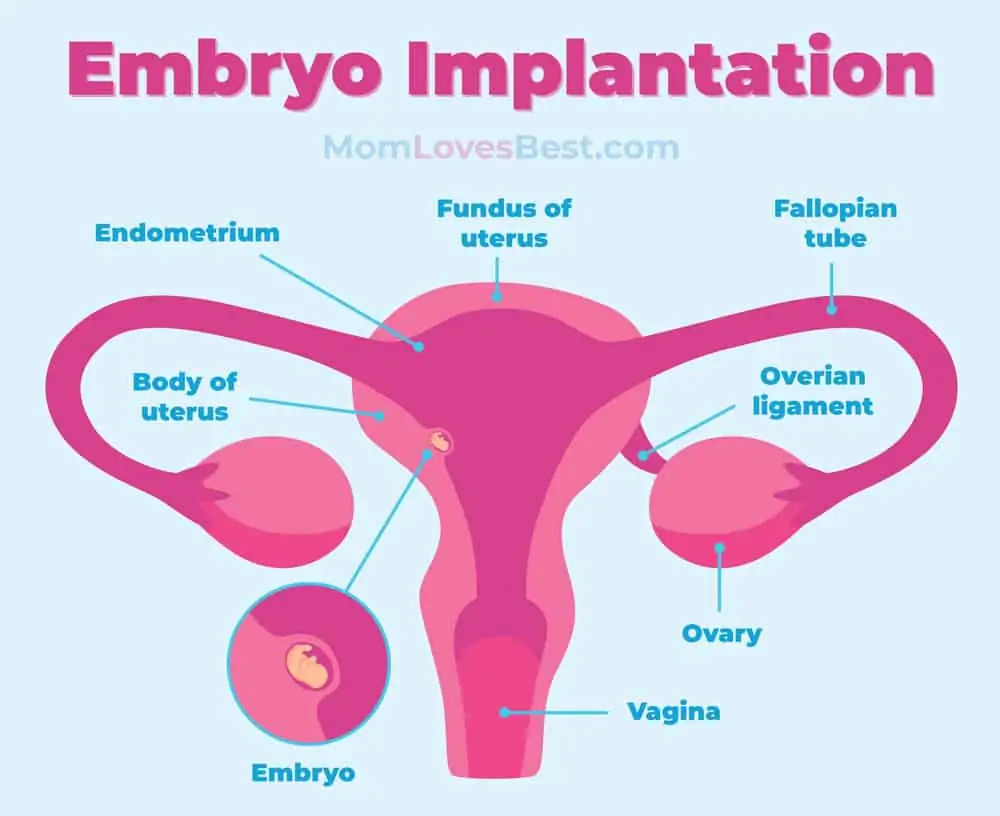When you’re trying to conceive, it is hard to focus on anything other than what is happening inside your body. You are likely wondering how long after sex implantation happens so you can figure out if you get to see that big fat positive on a pregnancy test yet.
The answer is not exactly straightforward. There isn’t a direct alarm clock that rings at two hours, two days, or two weeks. Several biological factors come into play.
To give you the best answer, we need to look at the journey of the sperm and the egg. We will break this down simply, explain what implantation actually is, and discuss the timeline so you know when to test.
Key Takeaways
- The Concept: Conception happens when sperm fertilizes an egg, creating a zygote that eventually burrows into the uterine lining.
- Lifespans: Sperm can survive inside the female body for up to five days, while eggs remain viable for only 12 to 24 hours.
- The Timeline: Implantation typically occurs between 6 and 12 days after ovulation, which means it can be anywhere from 6 to 17 days after sex.
- Best Practice: To maximize chances, aim to have sex every two to three days to keep a fresh supply of sperm waiting for the egg.
What Is Conception?
Conception occurs when a sperm meets an egg and they join together to form a zygote. This is the biological spark of a new life, also known as fertilization. The fertilized egg then travels down to the womb where it embeds itself in the uterine lining to grow.
While it sounds simple, three major factors dictate the timing:
- The Sperm’s Journey: How fast it travels and how long it survives.
- The Egg’s Journey: When it releases and how long it waits.
- The Joint Journey: The travel time to the uterus for implantation.
Let’s start by looking at the first traveler in this equation.
The Sperm’s Journey
The life of a sperm begins in the testicles. The scrotum houses the testicles outside the body to maintain the ideal temperature for sperm production (about 94 degrees Fahrenheit).
When a man ejaculates, he releases anywhere between 20 million and 300 million sperm mixed with semen. Men produce sperm continuously, meaning there is no limit to how many they create in a lifetime.
During sex, ejaculation propels semen into the vaginal canal. This is actually a hostile, acidic environment for sperm, so the semen acts as a protective shield. Only the sperm with the best motility (movement) make it through the cervical mucus and into the uterus.
Fortunately, cervical mucus changes during ovulation. It becomes less acidic and more slippery, acting like a superhighway to help sperm survive and swim. Once in the uterus, they must navigate to the fallopian tubes. Many take a wrong turn and never reach the destination.
A Sperm Timeline
Once a single sperm penetrates the egg, the egg instantly releases chemicals to repel all others. One sperm, one egg. The remaining millions are simply absorbed by the body (1).
This video gives you a unique look at the incredible journey sperm take.
The Egg’s Journey
The egg’s trip begins before a woman ovulates and ends once it reaches the uterus.
Unlike men, a female is born with all the eggs she will ever have. These reside in the ovaries, the almond-shaped organs situated just above the uterus.
Ovulation is the release of a mature egg. This typically occurs about 14 days into a menstrual cycle, assuming a standard 28-day cycle. However, ovulation timing varies wildly from person to person (and month to month), generally happening between day 11 and day 21.
A complex dance of five hormones controls this release. Estrogen and progesterone come from the ovaries, while the brain produces Gonadotropin-releasing hormone (GnRH), luteinizing hormone (LH), and follicle-stimulating hormone (FSH).
These hormones signal the ovary to release the egg and the uterus to thicken its lining. Once released, the egg has a short window: it lives for only 12 to 24 hours.
The fimbriae (finger-like ends of the fallopian tube) sweep the egg inside. Tiny hair-like projections called cilia then move the egg toward the uterus (2).
If the egg meets a viable sperm within that 24-hour window, fertilization can happen. If not, the body expels the egg and uterine lining, resulting in your period.
This video details ovulation and the release of an egg.
Sperm Meets Egg
The meeting is partially random timing. If sperm are already hanging out in the fallopian tube when the egg releases, fertilization can occur immediately. If not, having sex within 12 to 24 hours of ovulation can still result in conception.
After fertilization, the single cell (now called a zygote) begins to change. Over the next five to six days, it travels down the tube toward the uterus, rapidly dividing into multiple cells.
By the time it reaches the uterus, it has become a “blastocyst” and is finally ready to find a home in the uterine wall (3).
The Process of Implantation
While the egg was traveling, your uterus was preparing. Triggered by hormones, the uterine lining thickens and becomes rich with blood and nutrients.
Once the fertilized egg (blastocyst) arrives, it needs to burrow into this lining to survive. This attachment process is called implantation. It is not instant; the blastocyst may float in the uterus for a day or two before finally attaching (4).
This video explains the implantation visual.
The Math: How Long After Sex?
This is the part that confuses many people. “After sex” and “after ovulation” are two different clocks. Let’s do the math to give you a realistic window.
The Factors:
- Sperm Survival: Up to 5 days.
- Egg Survival: Up to 24 hours.
- Travel Time: The fertilized egg takes about 6 to 7 days to reach the uterus.
- Implantation Window: Most common between 8 and 10 days past ovulation (DPO), but ranges from 6 to 12 DPO.
The Calculation:
If you have sex 5 days before ovulation:
- Sperm waits 5 days + Fertilization happens + 6 to 12 days for implantation.
- Result: Implantation happens roughly 11 to 17 days after sex.
If you have sex on the day of ovulation:
- Sperm meets egg immediately + 6 to 12 days for implantation.
- Result: Implantation happens roughly 6 to 12 days after sex.
The Bottom Line: Implantation generally happens between 6 and 12 days after ovulation. Depending on when you had sex relative to that egg release, the total time from intercourse to implantation is usually between 1 and 2 weeks (5).
How Will You Know If It Happens?
Some women swear they can feel the exact moment of implantation, while others feel absolutely nothing. Both are normal.
Common signs often mimic PMS, making the “Two Week Wait” frustrating. These signs can include:
- Light spotting (Implantation bleeding): Often pink or brown, not red like a period.
- Mild cramping: Usually lighter than period cramps.
- Headaches or backaches.
- Nausea or food aversions.
- Breast tenderness.
- Mood swings.
You can read more about these specific signs in our article DPO Symptoms: Recognize The Signs You Could Be Pregnant.
What Happens After Implantation?
Once the egg is nestled securely in the uterus, the body begins producing the pregnancy hormone hCG (human chorionic gonadotropin). This is the hormone pregnancy tests look for.
A sensitive test might detect hCG as early as 3 to 4 days after implantation. However, it takes time for levels to build up high enough for a standard urine test. Testing too early often leads to false negatives.
The most accurate time to test is the day after your missed period (6).
Find out more about testing timing in our guide: When Can I Do a Pregnancy Test After Implantation?
Timing Sex to Get Pregnant
The best time to get pregnant is the “fertile window” (the five days before ovulation plus ovulation day). However, since menstrual cycles vary, hitting this target can be tricky.
If you have a standard 28-day cycle, your window is usually days 11 through 16. If your cycle is irregular, calendar math won’t help much.
The Strategy:
To cover your bases, aim to have sex every two to three days throughout your cycle. This ensures a fresh supply of sperm is always waiting in the fallopian tubes whenever the egg decides to drop.
This approach has two major benefits:
- Less Stress: You aren’t treating sex like a scheduled chore or panicking about ovulation sticks.
- Better Sperm: Frequent ejaculation can actually improve sperm quality and motility (7).









